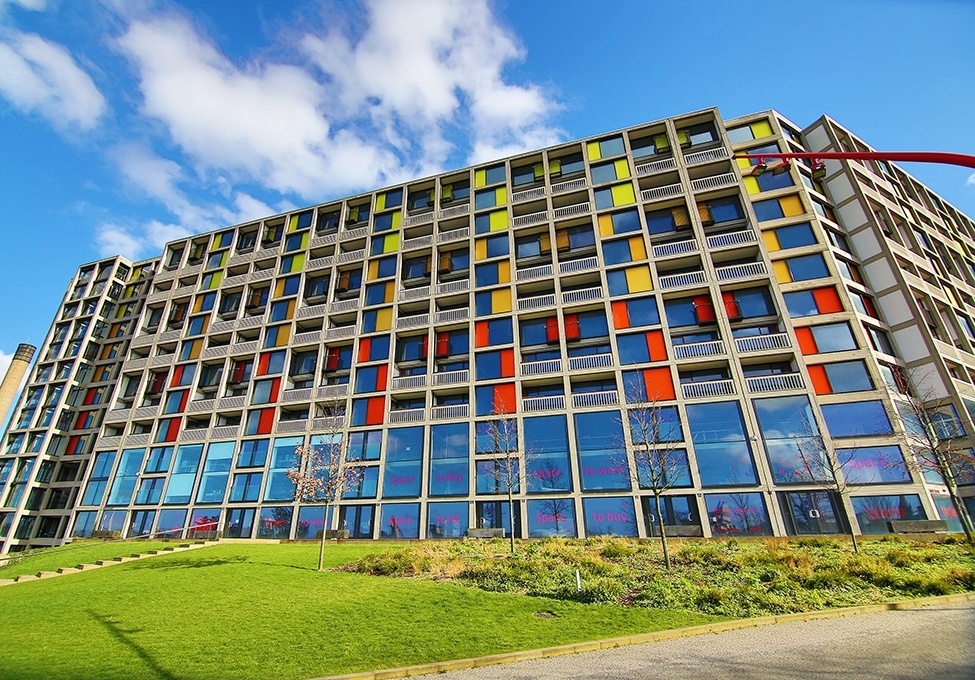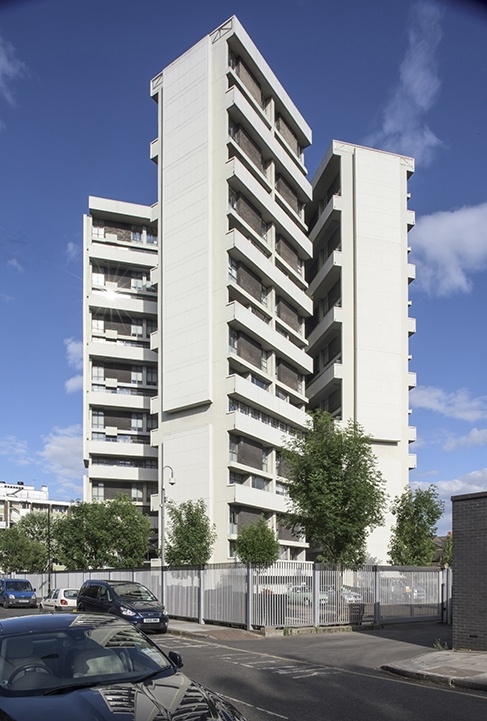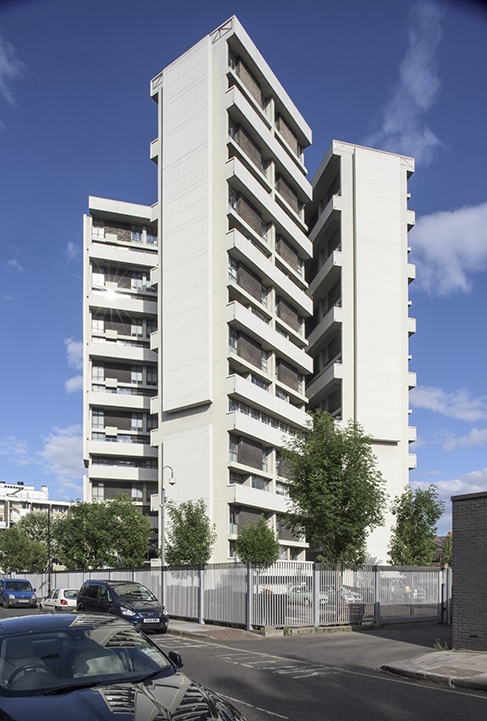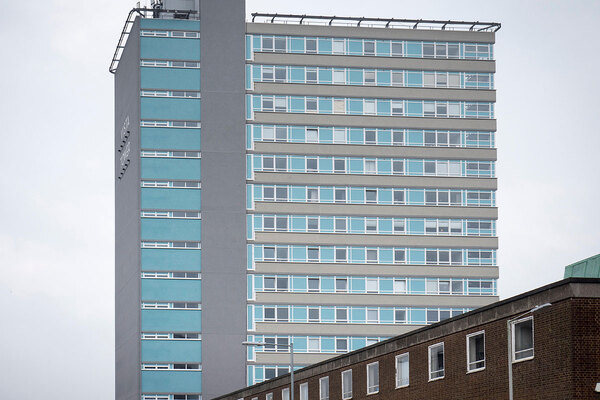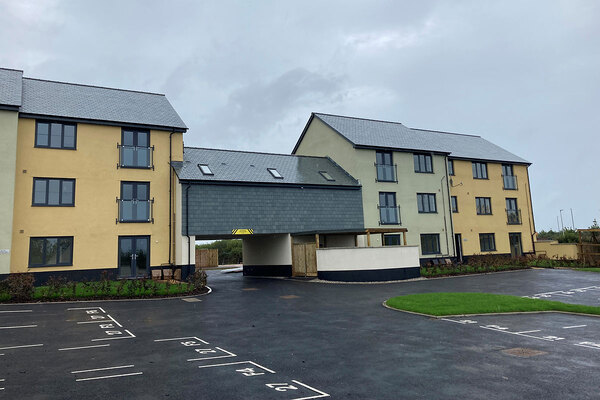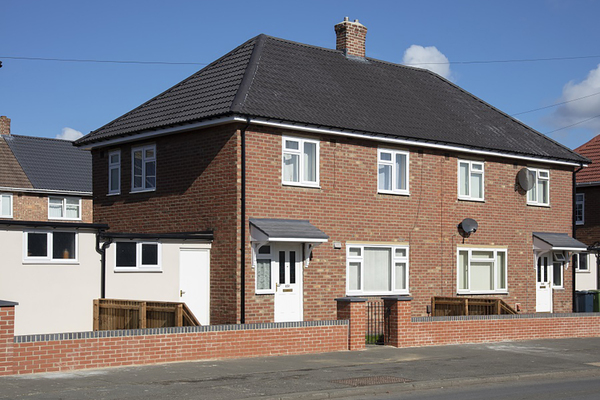You are viewing 1 of your 1 free articles
The Regeneration Game
Are regenerated estates always an improvement on what went before? Padraig Reidy finds out
Video:
features code
Visitors to the regeneration section of 40,000-home Glasgow Housing Association’s website are greeted with a 54-second film of the demolition of the city’s Red Road tower blocks in October 2015. In the background, a local sings “Cheerio, cheerio, cheerio!” The message is clear: the old and unloved buildings will be literally blown away, and a bright new future awaits.
Such scenes are being repeated across the UK, and they will become more common when and if the government fulfils its pledge to regenerate so-called ‘sink estates’. But in architectural terms, are the buildings which arise in place of the demolished towers necessarily better? Surely, the regenerators say, they can’t be worse than the estate blocks of the past?
These estate regeneration projects certainly have their architectural critics. “Quite often regeneration means cladding, often with a kind of ‘dazzle ship’ design of colours and shapes to break up the facades of large blocks,” says John Grindrod, author of Concretopia: A Journey Around the Rebuilding of Postwar Britain. “Buildings might function better with extra layers of cladding and insulation, but the novelty of these Teletubby-friendly patterns soon begins to pall.”
Video:
Ad slot
Regen reservations
Sometimes even the architects behind these projects have reservations - at least at the outset. Paul Latham is an architect at London-based Regeneration Practice, whose projects have included the award-winning, £3.5m transformation of the Concrete House for 4,000-home Hexagon Housing Association in south London.
“At the Concrete House we found the housing association’s initial focus was on targets designed primarily for new buildings such as Parking Standards, the Code for Sustainable Homes, Secured by Design and Lifetime Homes,” he says. “While admirable in itself, this process-driven approach did not sit well with the specialist conservation skills required to respond creatively and sensitively to a 150-year-old listed building. We often struggled to meet the targets and needed to continually stress and inspire the association to understand this. In the end, to their credit, the association recognised and fully brought into the conservation aims to achieve an exemplary solution.”
Design is a crucial component when considering whether to embark on a regeneration project, says Jerome Geoghegan, group director of development and sales for 70,000-home L&Q Group: “It is one of the critical elements that we would need confidence in before committing to any scheme. Without that confidence or control we would be unlikely to pursue an opportunity.”
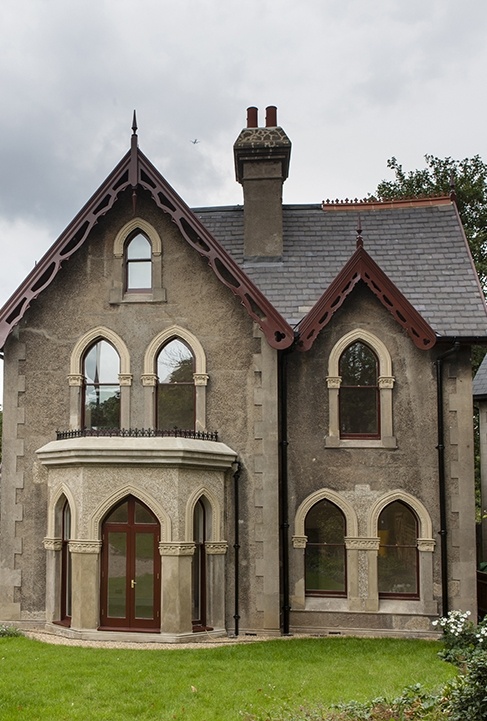
Source: Robin Barret-Forster
Concrete House in Dulwich, converted into flats by Hexagon Housing Association
But architectural design isn’t just about a striking building - there is the rather more political question of who the buildings are designed for.
“If you look at, say, Keeling House in Bethnal Green, which was sold by the council for £1 in the 1990s, the legacy there has been a high-spec regeneration which has attracted fans of the architecture to move in,” points out Mr Grindrod.
In mentioning these “fans of the architecture”, Mr Grindrod is hinting at a deeper concern; for some, ‘regeneration’ is nothing more than a codeword for gentrification.
Architects for Social Housing (ASH) was set up last year in response to London’s housing crisis. In an article published by the online journal Open Democracy in July 2015, ASH’s founders Simon Elmer and Geraldine Dening argue: “In the newspeak of our Orwellian times, ‘regeneration’ means redevelopment.”
The article continues: “Contrary to what residents are told by politicians, borough councils, housing associations and the architectural practices in their employ, the last thing on the minds of property developers is re-housing tenants on council rental rates - not when the land their homes sit on is some of the most valuable in the world.”
ASH proposes that “infill, build-over and refurbishment are more sustainable solutions to London’s housing needs than the demolition of the city’s council estates”, and provides alternative architectural plans for sites designated for regeneration, such as the Central Hill Estate in Lambeth, south London.
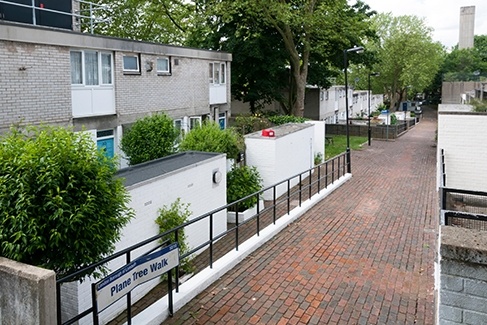
Central Hill Estate in Lambeth
While its residents feared that the council’s regeneration plans could lead to the demolition of the majority of the estate, ASH put forward plans for infill and refurbishment they claim could “add around 222 new homes on the Central Hill Estate, without demolishing a single home”. Mr Latham, however, defends the trend towards private or part-ownership in regenerated housing: “100% housing for rent is the greatest social evil of the last century and has done so much to create division within society,” he argues. “All social housing tenants should own at least a small part of the housing they live in to give them a stake in society. This will engender pride of place and encourage tenants to increase their ownership with rising values.”
The regeneration of the 1,000-flat Park Hill Estate in Sheffield is a prime example. This huge, brutalist block, built between 1957 and 1961, was Grade II-listed in 1998, a move seen as controversial at the time. The listing prevented the demolition which would otherwise have been Park Hill’s fate. Instead the site is being redeveloped by the private Urban Splash group.
To list or not to list
Writing in The Observer, architecture critic Rowan Moore was full of praise for the development, noting: “The decision to list the building now looks brave and right. Had it gone, nothing would now be there but the nothing housing you see all over the country, with meaner dimensions, shoddier building and an absence of spirit. Nor is the rescue of Park Hill a grotesque extravagance: demolition and rebuilding would not necessarily have been more cost-effective and it would have been environmentally profligate.”
Mr Moore found much to admire in Urban Splash’s reimagining of Park Hill’s ‘Streets in the Sky’, with brighter facades and aluminium panelling the developers hope will make the building “shimmer”. But he also points out that two-thirds of the estate’s 1,000 flats, all council flats originally, will now be up for private sale. Mr Grindrod describes Park Hill as the kind of regeneration project “that transforms not only the buildings but the occupants too”.
Mark Latham, regeneration director at Urban Splash, says of his firm’s project: “The aim of any Urban Splash regeneration project when working with an existing building or estate is to take the best of the old and combine with the best of the new to create a new place with lasting value for its residents and/or business occupiers.”
Emphasising the fact that his company embraces the “brutalist look”, Mr Latham goes on: “The legacy of buildings like Park Hill is not just their design credentials, but also the role of developers such as Urban Splash in using perfectly viable disused sites and turning them into homes for the future. At Park Hill we have a fantastic mixed-tenure community of tenants, private purchasers and those who’ve bought via affordability schemes such as Help to Buy. There’s a definite legacy in buildings like this opening the door to homeownership for first-time buyers.”
For Elliott Hodges, an architect working in London commenting here in a personal capacity, the issues around regeneration are complex.
“It’s important to separate the socio-economic issues of regeneration from the architectural issues,” he says. “From a socio-economic standpoint the impact of regeneration has been at best a mixed result, at worst a disaster. In the name of ‘regeneration’ massive estates in London have been decanted - Heygate, Aylesbury, Ferrier - and a large proportion of the residents of these estates (many of them lifetime and above 55) have not been and will never be rehoused in anything permanent, or in the same area or even in the same borough.”
Can regeneration ever provide a decent legacy for both design and communities?
“Not all regeneration schemes are bad,” says Mr Hodges. “I would point to [the regeneration of the land to the north of] King’s Cross [station] as a standout example of what can happen with a public-private development that is well regulated by the governing borough.”
He points out that no public housing was demolished in the King’s Cross redevelopment, with building on what was a rail stockyard. But Mr Hodges says there are nevertheless some general lessons to be learned, notably that strong leadership from local authorities - in this case, Camden Borough Council - backed up by government can produce first-rate regeneration schemes.

Source: Rex Features
Red Road flats in Glasgow, which were once the tallest residential buildings in Europe, are brought down by controlled explosion
Martin Armstrong, chief executive of Glasgow Housing Association’s parent company Wheatley Group, which led the demolition of Glasgow’s Red Road flats, has argued in these pages that regeneration means different things to different people.
Red Road’s last tenants have been scattered across the city, and the fate of the site is still up for grabs pending a public consultation.
As with regeneration schemes across the UK, what the redevelopment of the Red Road Estate will mean to the people of Glasgow - and the city’s architectural heritage - remains to be seen.
